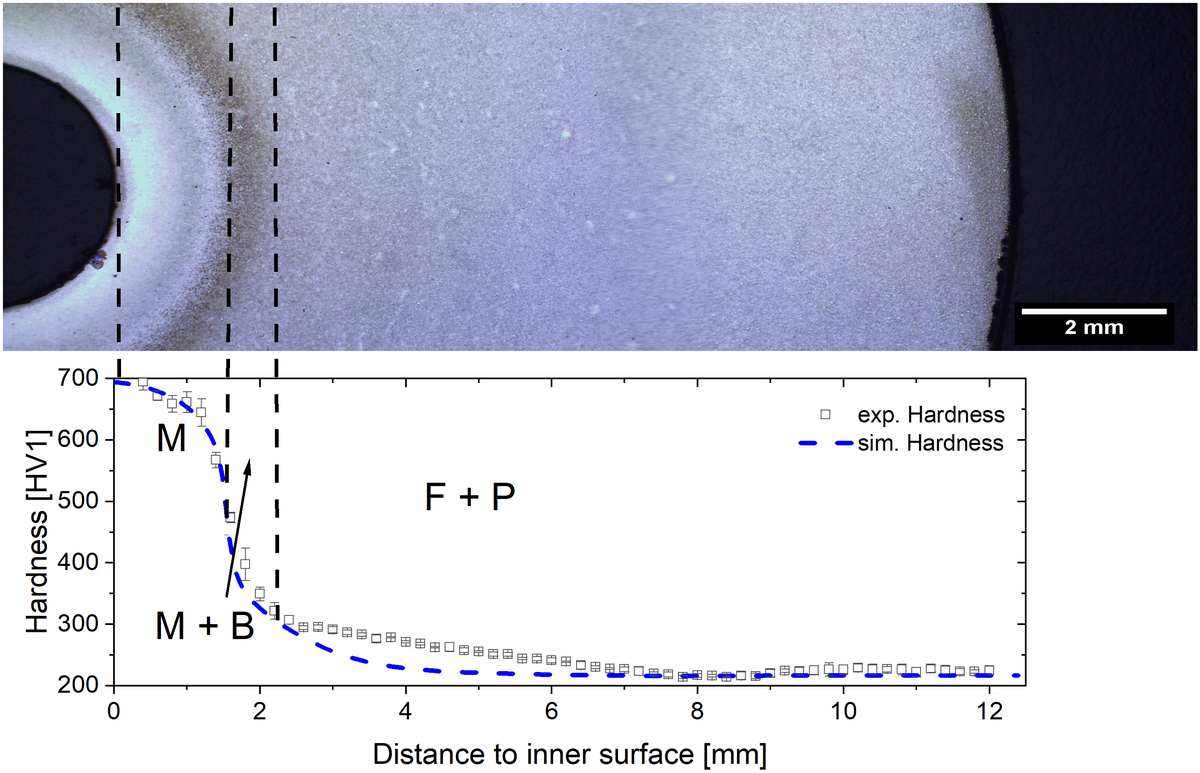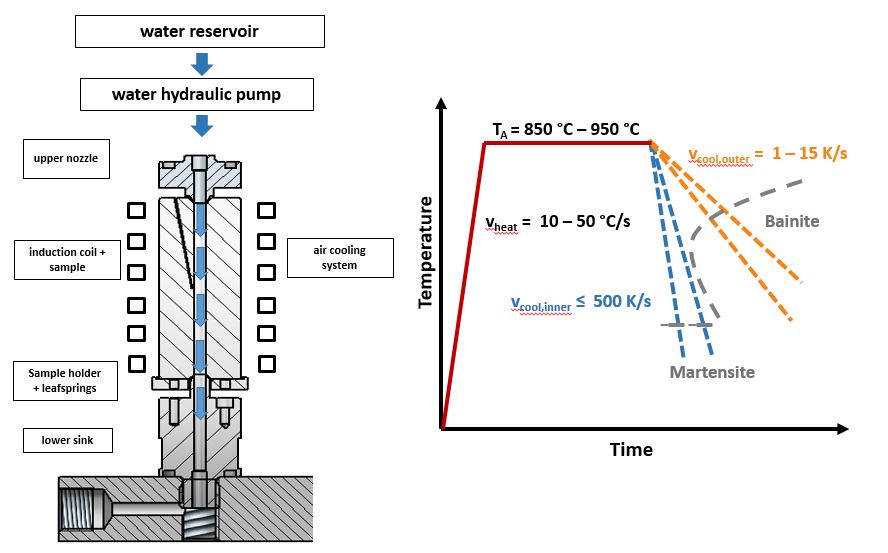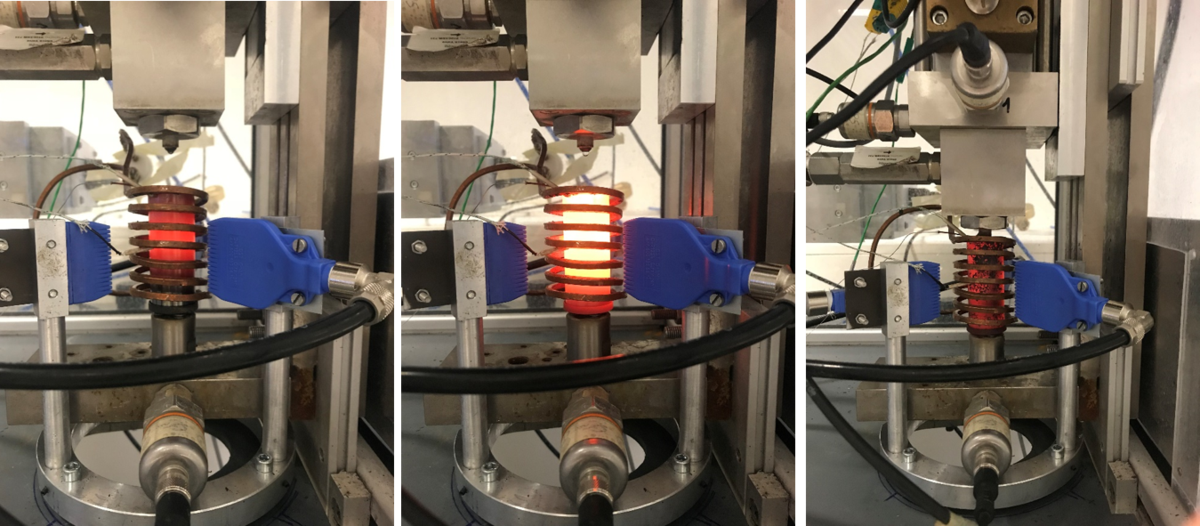Internal Intensive Quenching (IIQ): ideal heat treatment of hard accessible component sections
M.Sc. Fabian Mühl
Motivation
Internal Quenching (IQ) is a heat treatment method to improve the fatigue strength of internally loaded high pressure components like common rail parts or pipelines. So far, a strengthening of these components can be realized by mechanical surface treatments (like e. g. autofrettage). These processes introduce residual stresses in the inner surface of through-drilled parts by plastification with a small proportion of cold-working. Besides adjusting the residual stresses an improvement of the fatigue strength can be realized by changing the microstructure with a thermal/thermal-chemical process. The most common methods are the induction- and case-hardening. These methods reach their limits in treating difficult to access part sections. The Internal Quenching process constitutes an alternative method to increase the surface strength of through-drilled parts. It is derived from the heat treatment Intensive Quenching developed by N.I.Kobasko [1], where components are quenched with a highly pressurized mixture of water and air under extreme velocities of the quenching media after austenitisation. The resulting high heat transfer coefficient leads to a martensitic microstructure and compressive residual stresses in the surface. With the prototypic Internal Quenching device, which was built up at IAM-WK, it is possible generate hardened surfaces and influence residual stresses in through-drilled parts by a pressure of the quenching medium up to 100 bar.
Goals
- Heat treatment of hard accessilbe component sections
- Strengthening of high loaded inner surfaces (for example: Common Rail Injectors)
Investigations
- Investigation of the bainitic phase transformation
- Experimental investigation of different heat treatment strategies optimizing the inner surface state
- Modeling and simulation of the IIQ-process



